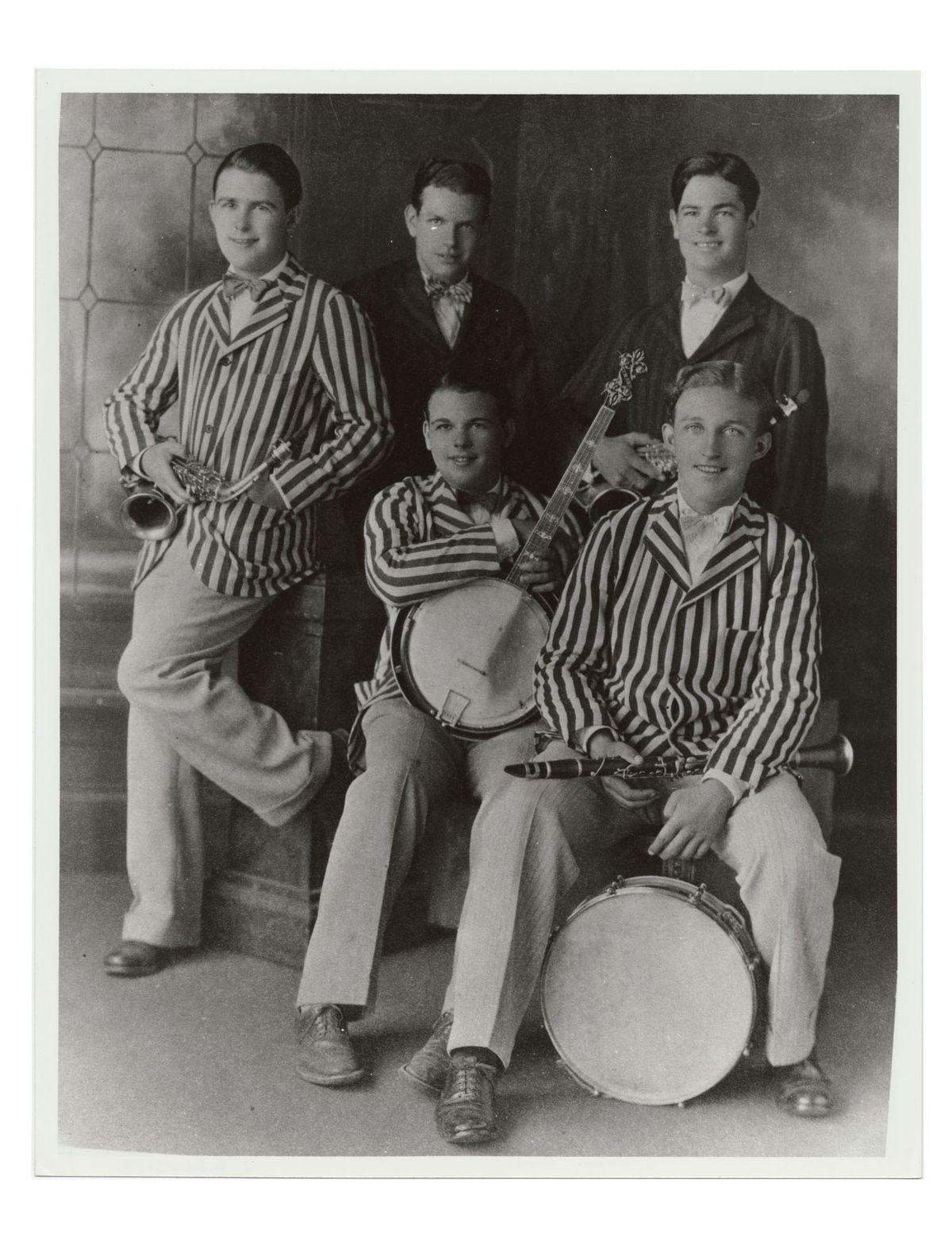It’s easy to get jazzed up about MAC’s new exhibit
‘Jumpin’ With the Big Bands’

New Orleans might seem a more likely place to see Louis Armstrong’s boyhood cornet.
Or New York a more likely place to see Artie Shaw’s clarinet.
Yet the Northwest Museum of Arts and Culture has transformed itself into a repository of jazz history for the next few months with its new exhibit, “Jumpin’ With the Big Bands.”
This exhibit, five years in the making, tells the story of jazz and swing from its earliest roots to its popular triumph during the Big Band Era of the 1930s and 1940s.
Marsha Rooney, the museum’s senior curator of history, said she pulled off this ambitious exhibit with help from some influential friends: the Smithsonian Institution and the International Jazz Collections at the University of Idaho.
From the Smithsonian came:
• The battered cornet played by the youthful Armstrong, when he was at the New Orleans Colored Waif’s Home for Boys (see accompanying story).
• Shaw’s clarinet, which he used to play “Begin the Beguine” and hundreds of other classic tunes.
• A collection of antique microphones, which influenced the spread of jazz.
From the International Jazz Collections – affiliated with UI’s Lionel Hampton School of Music – came a wealth of Hampton photos and artifacts, as well as many other items from the early days of jazz.
Other items came from the Hogan Jazz Archive at Tulane University, the Institute of Jazz Studies at Rutgers University and the Gonzaga University Archives.
That’s the kind of collaboration the MAC needed in order to tell the national, not just the local, story of swing.
Yet parts of the exhibit also touch on the Inland Northwest’s surprisingly potent contributions to jazz history:
• The hugely influential roles played by Spokane’s Bing Crosby and Mildred Bailey in the national jazz scene.
• Spokane’s own jazz hotspot, the Pirate’s Den, later renamed the Harlem Club, which provided “sizzling syncopation” from 1929 to 1951.
• Local jazz legends, including Berneice Adams, Don Eagle, Bruce Davis Ray Hendricks and Wally Hagin.
Because it was originally planned as a traveling exhibit – those plans later had to be downscaled – the emphasis remains on the national story.
Rooney said several themes run through the exhibit: segregation (and later, integration); the importance of showmanship, including dance; and the influence of technology on the way swing was played.
Visitors will first encounter the exhibit in the museum’s solarium, before they get to the main gallery. There, you can explore the origins of jazz in historic film clips of field workers singing call-and-response tunes. It’s also where Satchmo’s cornet will be displayed.
You’ll also see a stern 1918 editorial from the New Orleans Times-Picayune decrying a pernicious new form of music called “jass” which the paper called a “manifestation of a low streak in man’s tastes.”
Then you’ll walk down a hallway in which you’ll learn about Harlem’s Cotton Club and the Savoy Ballroom and the popularizing influence of Paul Whiteman. A film clip, projected overhead, shows hep cats doing the Lindy Hop.
After entering the main gallery you’ll be presented with a wealth of information about how swing became the nation’s most popular form of music during the Big Band Era. Be sure and check out Cab Calloway’s “Hepster Dictionary,” which will teach you how to speak jive.
“I think this exhibit is really cross-generational in its appeal,” said Rooney.
“Of course, it will appeal to people who lived through the war years. But I’m astounded at how the Big Band stuff continues to appeal to people today.”
You can see the exhibit anytime during museum hours, but you can also check it out in a couple of especially entertaining ways.
The first will be during the kickoff of the MAC’s new “BeGin” series, the museum’s monthly after-work “happy hour” party, on Friday from 6 to 8 p.m. Six Foot Swing, a local swing band, will perform. You’ll also get a free drink with admission.
The second will be on New Year’s Day, where you can get free admission with your First Night button. There will be music and other entertainment as well.